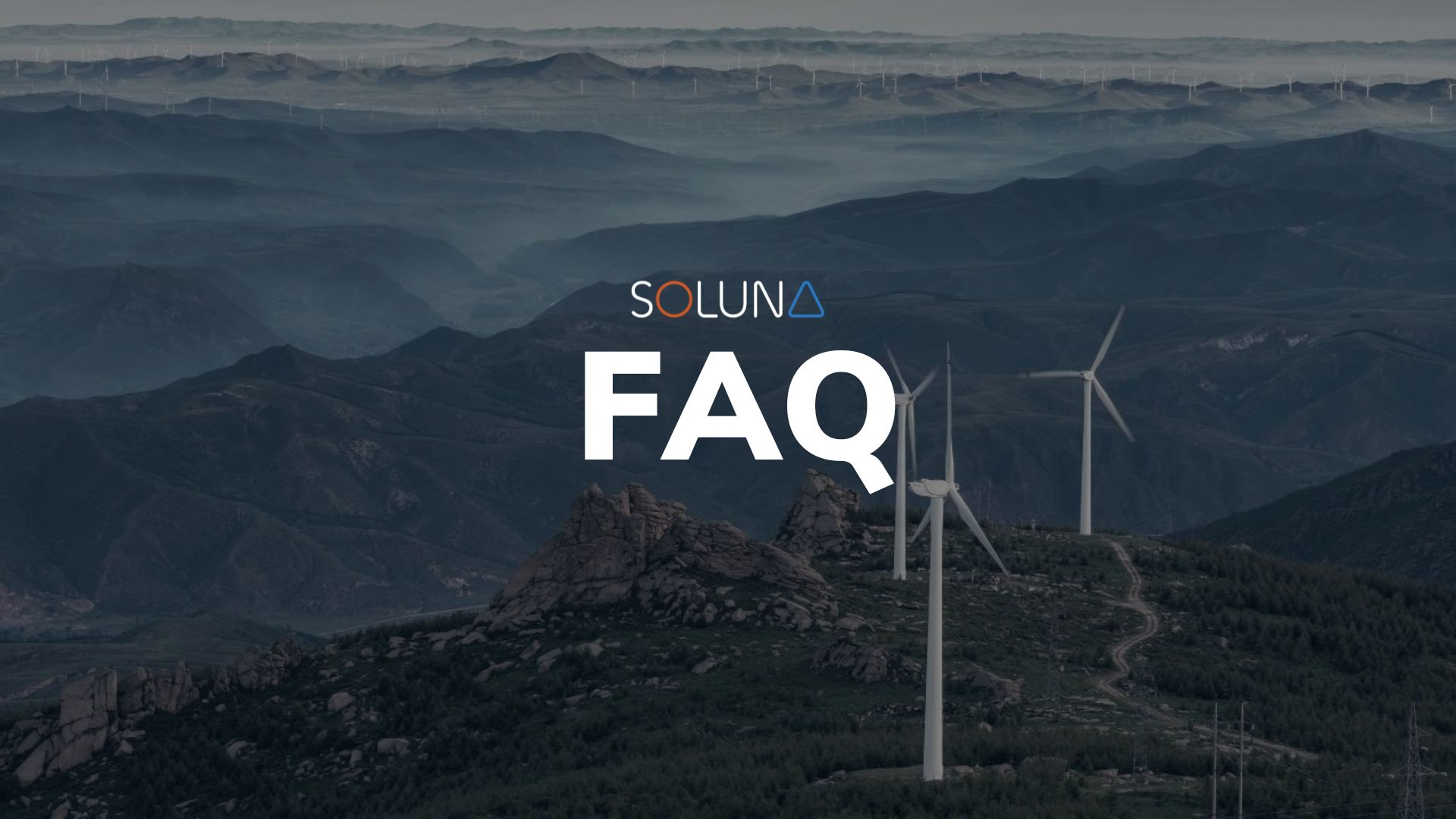Welcome to another installment of Soluna’s AMA (Ask Me Anything) series, where you — our readers and our followers on Twitter and LinkedIn — can get your questions answered.
In this Q&A, John Belizaire, CEO of Soluna Holdings, Inc., answers shareholders’ and potential investors’ most asked questions about our recent reverse stock split and other business updates
Learn how to submit your questions, if you haven’t already, at the end of this AMA.
Why did you do the reverse split?
Companies may decide to implement a reverse stock split for several reasons. In the case of Soluna, stock exchanges (such as Nasdaq, on which Soluna is listed), require listed companies to maintain certain minimum share price requirements to retain their listing, A company that fails to maintain this minimum share price is subject to delisting, making it more difficult for investors to trade and potentially reduce the company’s valuation. The Company received a delisting notice from NASDAQ because the $1 minimum bid requirement had not been met, and the Company was forced to effect the reverse stock to bring the Company into compliance by October 31, 2023.
Why does the market cap of a company sometimes drop after a reverse stock split?
While there are benefits of a reverse stock split (such as maintaining the NASDAQ listing and the potential for increased institutional interest where investors are usually unwilling to buy stocks perceived as penny stocks), there are usually some immediate short-term consequences that follow the effectuation of the split. Such consequences include negative investor perception and at times reduced liquidity, since there are fewer shares outstanding available to trade which can have an immediate effect on a company’s market cap. But, a reverse split does not affect the economic value of the company or of a particular person’s shareholding. It is the same thing as saying I would like $100 in singles or a $100 dollar bill. The value is the same.These risks were identified in the proxy statement sent to stockholders in connection with the authorization of the reverse stock split. However, as noted above, we really didn’t have a choice if we were to maintain the NASDAQ listing. Another example, some shareholders that held 250 shares now found they held 10 shares and may have felt that was too few so may have decided to sell. We can speculate, but It is impossible for us to know what drove the nearly 50% decline in the value of our shares literally overnight..
What does a company consider in determining the ratio for a reverse stock split?
Companies considering a reverse stock split first must look at the current market price of their stock and the minimum share price requirements of any applicable marketplace standards. In the case of Soluna, our stock was trading between $.20 and $.30 cents on the Nasdaq Capital Market. Nasdaq Capital Market companies are required to maintain a minimum share bid price of $1.00. However, many institutional investors have a $5.00 minimum stock price. Therefore, Soluna decided to implement a 1-for-25 stock split ratio, targeting a post-split price between $5.00 and $7.50.
Furthermore the company believed that a price over $5.00 per share would decrease volatility and increase liquidity. The reverse split ratio selected did not consider any potential relationship or effect on new share issuance and is in no way connected to that in the company’s thought process.
The company continues to perform and has a number of exciting growth opportunities as it executes its business plan. Over time the expectation is that the company’s share price will reflect its underlying fundamentals and growth prospects.
Updates on Dorothy and Kati may be found in our recent monthly business update press release for October or the upcoming one in November.
Seems like the company is starting to hit its stride. Why doesn’t the share price reflect that?
We’ve completed nearly all the goals I outlined in the shareholder letter earlier this year.
We have successfully energized Project Dorothy, our Flagship site. We have transitioned our business to primarily hosting, and some joint-ventures around proprietary mining. We have implemented expense reductions programs. We have continued to grow our pipeline, and started maturing projects like Project Kati (166 MW) to become shovel ready. We have done work to attract capital to grow our platform. And, we have begun to lay the groundwork for expansions beyond bitcoin mining into the fast growing area of generative AI. All of this progress has put the company in a better position to grow than it was a year ago. That has all been achieved in the six-month period that I have been at the helm.
Why doesn’t the stock price reflect that? Well, that is a great question.
Where will you get funding to build Project Dorothy 2. How close are you to getting that funded?
We have been approached by a few potential partners to fund Dorothy 2. We are evaluating these proposals and have whittled our options down and are negotiating the final details now. Project-level financing tends to take longer to put together and negotiate. So, stay tuned.
Are there any options on the table for eliminating the convertible debt? Could the company potentially sell off a piece of the new projects (e.g. 50% of Dorothy 2A) to pay off the loan?
The company is constantly seeking to optimize its capital structure. As part of its assessment, it seeks to reduce dilution to shareholders, and manage its leverage and its asset base. In short, we are working on it. As we consummate definitive agreements we will certainly make prompt shareholder disclosures.
Can you elaborate on the relationship between SCI US Holdings LLC, Harmattan Energy Ltd, and Soluna Holdings? The filing about the October 10, 2023 issuance of 990,000 Merger Shares was quite confusing.
Harmattan Energy Ltd. (“Harmattan”) is a renewable energy development company that is developing a large wind farm in Morocco. Soluna Computing, Inc. was an offshoot of Harmattan and was later merged with a subsidiary of MTI to form Soluna Holdings. The consideration for the acquisition is paid in shares to SCI US Holdings LLC when sites from the original pipeline are energized, including Dorothy. SCI US Holdings LLC is a shareholders representative holding company formed to receive the consideration on behalf of the original shareholders of Soluna Computing. The recent share issuance was for hitting the energization milestones at Project Dorothy. More information on this can be found in our 10.Q
Do you have a plan to resume preferred stock dividends? Can you at least start making partial payments on the arrears which are now a year old? Even a couple pennies a share would be helpful, and more important, show your good faith towards your investors.
Resumption of preferred share dividends is dependent on our successful execution of our business plan and positive cash flow. As we make progress executing our business plan and generate cash the board will assess the potential to make preferred share dividends. That is our plan and we are making progress.
Thank you for submitting your questions!
If you’re reading this and haven’t had a chance to ask your question, it’s not too late.
Fill out this form, or drop your questions on Twitter @SolunaHoldings, to have your questions answered in our next AMA installment.
If your question wasn’t answered here, be sure to subscribe to our newsletter. We’re providing business insights and answering questions there, too.




